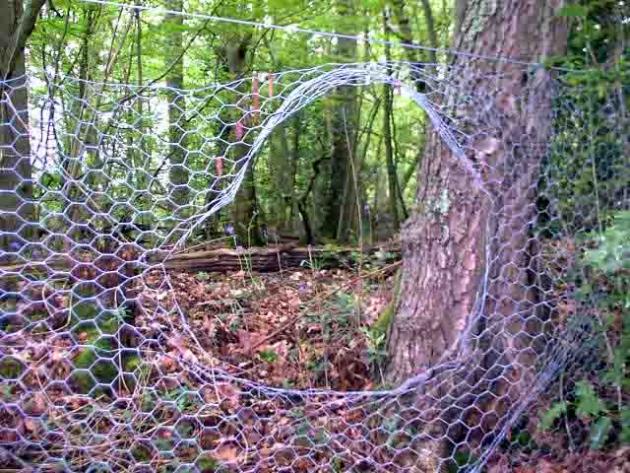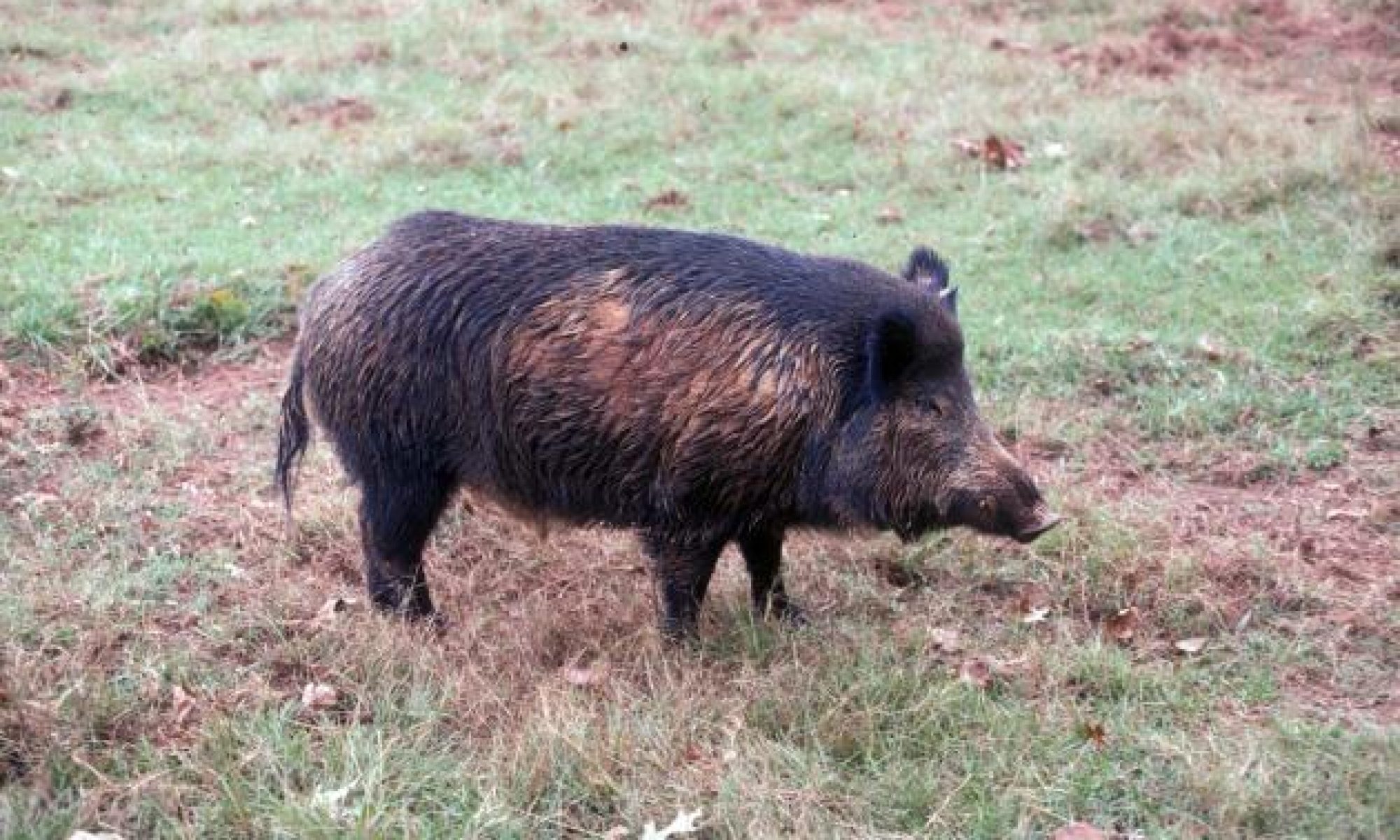Although feral hogs (also called wild hogs and wild pigs; Sus scrofa) are a big game resource in the United States, these non-native animals are almost always classified as an undesirable invasive species.
Feral hogs cause a large variety of damage to natural and man-made environments. Economic losses from feral hogs to agricultural resources, including cost of feral hog control, is an estimated $1.5 billion annually in the United States (Pimentel 2007). Feral hogs are one of the one hundred worst invasive species in the world today (Lowe et al. 2000).
 |
| Figure 1. Fence damaged by feral hogs. Photo courtesy of Jack Mayer. |
 |
| Figure 2. Vehicle damaged in a collision with a feral hog. Photo courtesy of Jack Mayer. |
Types of damage attributed to feral hogs are:
- Rooting – the most widespread and observable type of damage.
- Agricultural crop losses – known globally for their costly damage to almost any commercial crop.
- Tree and forest losses – documented to severely impact trees and timber resources.
- Disease– carries at least 30 important viral and bacterial diseases.
- Predation– preys on a broad range of animal species.
- Wallowing – contaminates water holes and negatively alters stream habitats, muddying waters, creating algae blooms, creating bank erosion, destroying aquatic vegetation, and decreasing livestock use and fish production.
- Competition with wildlife– competes with native wildlife species for available resources including ground-nesting birds.
- Vehicle collisions – as numbers of feral hogs increase, the number of feral hog/vehicle collisions increases concurrently (Fig. 1).
- Attacks on humans – although rare, most attacks on humans occur when hogs are cornered, threatened or wounded.
- Property damage – feral hogs in rural and urban areas break underground sprinkler and irrigation system pipes to access water contained in those lines; damage to floodgates and holes in fencing (Fig. 2).
 |
| Figure 3. Harvested feral hog being checked for radioactive contamination at the USDOE Savannah River Site in South Carolina. Photo courtesy of Jack Mayer. |
- Contaminant uptake – feral hogs harvested for consumption may serve as vectors for contaminants such as radioactive materials, metals (cadmium, lead, and mercury), organic compounds (organochlorine pesticides and polychlorinated biphenyls) into the human food chain (Fig. 3). Incidental ingestion of soil during foraging and preference for wallowing in wetlands and drainages, where many such contaminants are frequently present, increases the potential uptake of hazardous materials. For example, the Chernobyl nuclear reactor disaster in Belarus in 1986 resulted in increased radionuclide body burdens in wild boar in Germany. Some of these levels were so high that meat from affected animals exceeded the limit designated as safe for human consumption.
